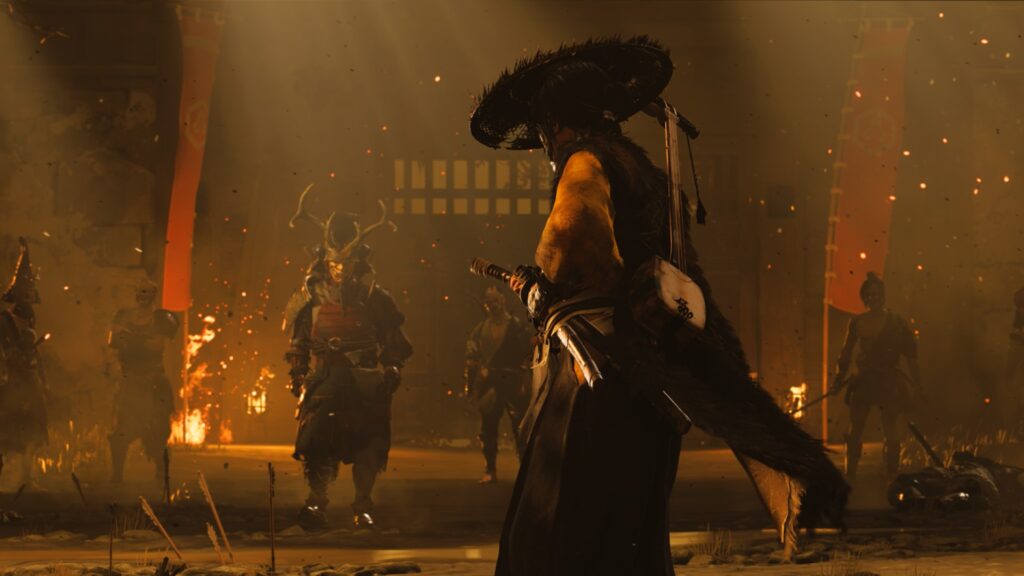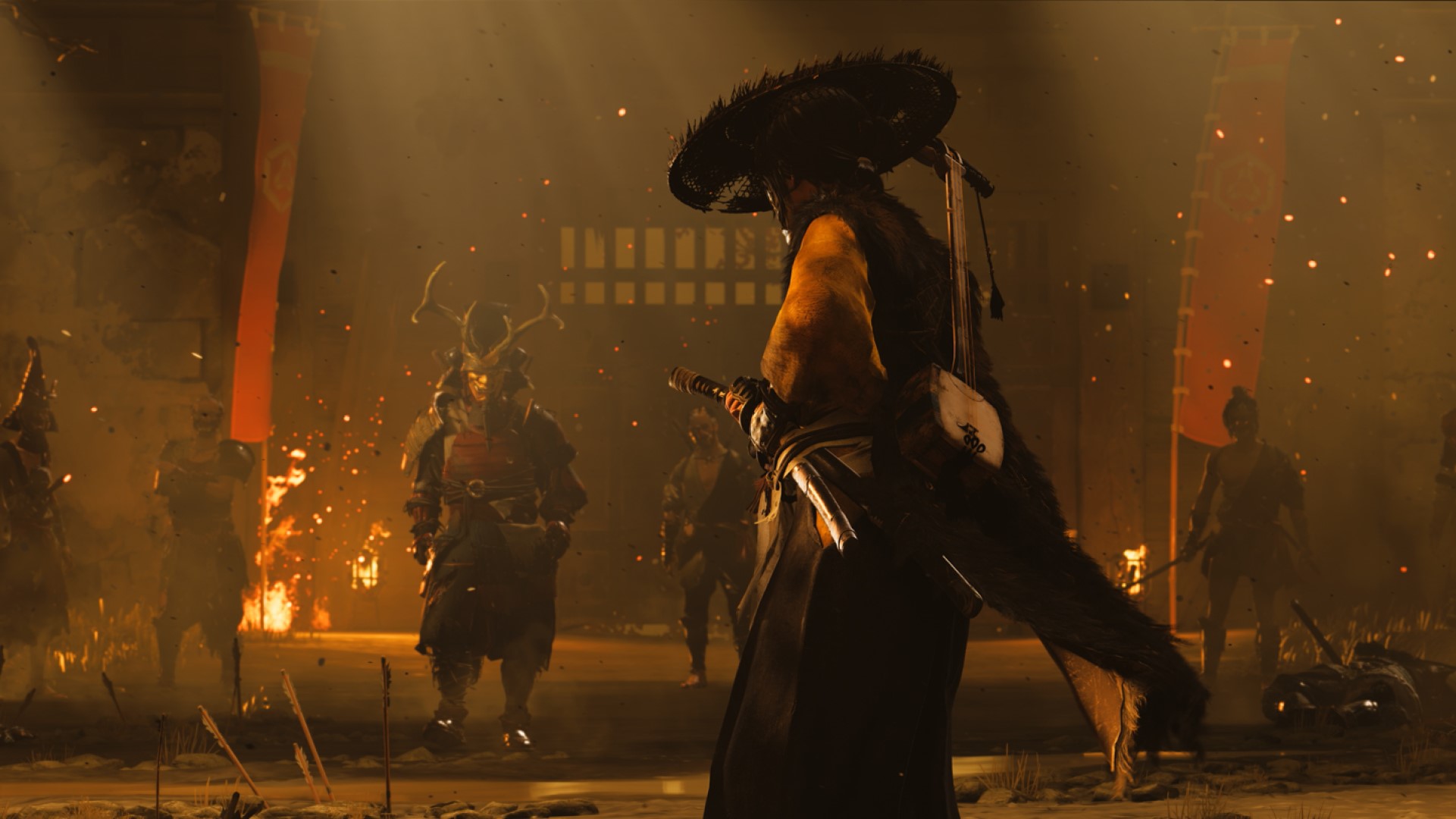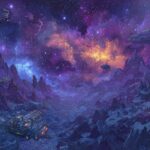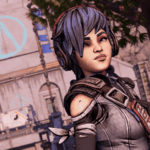By now, those who picked up Ghost of Yōtei will have doubtless spent hours traversing its gorgeous world. As demanding as the narrative can sometimes be – the Yōtei Six won’t wipe themselves out, after all – and as addictive as it can be to get lost in the side content, Ezo is brimming with spectacular details.
Some of these will become immediately obvious as you move through grass, snow and flowers. Others really become noticeable when venturing into the options menu and changing the settings. However, there is a lot to discover, whether you’re basking in the visual glory of Sucker Punch’s latest masterpiece or unraveling the many secrets within Ezo.
Here are 14 stunning details you should notice and discover for the full Ghost of Yōtei experience.
Raindrops Keep Falling on My Map
A detail that’s always appreciated in a video game is when the map is an actual object in the world. Case in point, take out your map while it’s raining and zoom out to get a better look. You’ll spot raindrops falling and even leaving stains on it. Thankfully, this won’t smudge the map or ruin it for future use, even if it would be kind of funny to keep revisiting the cartographer for a replacement.
Trampling Glass, Flowers, and More Underfoot
This is a straightforward example but still worth noting, especially with how many plains, flower fields, and whatnot you’ll traverse through the game. The flowers are perhaps more notable since racing through on horseback will leave defined paths. Of course, the impact of the wind can’t be overstated enough, whether it’s cherry blossoms falling from trees or leaves blowing aside to reveal a path.
Naturally Parting Snow
In the same vein, moving through snowy environments like Teshio Ridge and Mount Yōtei sees it part naturally. Interestingly, it can be a downside in Standoffs against enemies, since their foot movement is concealed, but hey, it still looks incredible – their spilt blood contrasts nicely with the snow, which segues into the next point…
Down in the Mud and Dirt
Whether it’s mud or the blood of your enemies, all this and more will accumulate on Atsu’s clothing (and face). It’s pretty cool to see, especially when rolling about in duels, but such details can be seen on other characters as well. But don’t worry – that NPC who you rescued and is clearly covered in their own blood isn’t in any danger. Of course, those who really want to up the blood quota can enable Miike Mode in honor of director Takashi Miike, especially since it makes combat even more stylish.
Wind-Cutting Strike
Aside from the wind blowing against grass and flowers, the sheer force of your sword swings can also move them. You won’t be chopping grass a la Link, but it indicates just how hard Atsu is swinging her weapons at any given time. The visual effect of each slash also looks quite nice.
Pick a Card, Any Card
You’ll acquire several different cards while journeying through Ezo, each divided into categories based on the activity. To quickly discern what card corresponds to which activity, try memorizing their colors. Gold Cards focus on the main story (corresponding to the gold gingko leaf for objective markers); Red Cards represent “unfinished business,” usually against enemy factions; and so on. The art adorning each card also looks pretty sleek, so take a moment to appreciate it.
From Onryo to Ghost of Yōtei
Though she’s a bounty hunter like so many of the ronin in Ezo, Atsu is herself a target. The descriptions represent current story progress, but her depiction becomes progressively more detailed as time passes. Which makes sense, especially as the Yōtei Six start to recognize the threat she represents and spread more information about her. At times, this is somewhat reflected in certain encounters with ronin – some may immediately recognize you while others will take a minute. It’s more representative of your progress through the story, but I’d like to believe it corresponds with those bounty posters.
Weathered Spyglass
Atsu’s spyglass will see a fair amount of use throughout Ezo, whether it’s to identify distant locations (and potential points of interest) or scout enemy camps and strongholds. If you look closely, though, you’ll notice some wear and tear, giving it that extra bit of authenticity and telling its own story of how long she’s relied on it.
Decked Out Kitchens
When stepping into an inn or teahouse, have a gander at the tables and the details of food on them. Or better yet, go to the kitchen and admire their arrangements, whether it’s vegetables hanging from the walls or various other organized ingredients. Some locations will even have a small farm where the same vegetables are being grown, adding to the immersion.
Campsites for Fast Traveling and Triggering Events
Camping offers numerous benefits, from temporary perks and Spirit to meeting with vendors, but it can also serve as a fast travel point. Granted, this isn’t super useful once you’ve cleared a significant amount of the map (since completed activities serve as fast travel points), but it’s ideal in the early going. Keep an eye out for leftover campsites as well, since they can trigger interesting things (like the appearance of a crimson dye merchant in Ishikari Plain).
A Change of Perspective
As majestic as the view can be on horseback, some people may not prefer the black bars on the top and bottom. To remove those, press R3 while riding around. Pressing it again also offers a closer angle to Atsu, perfect if you’re tired of admiring the incredible environments and stellar draw distance.
The Great Outdoors Experience
You can make the camping process as straightforward or complex as you’d like in Ghost of Yōtei, and that also applies to making a fire. Pressing R2 to blow into embers and spark a flame is nice, but how about actually blowing on the DualSense microphone? Head into the gameplay settings to configure this and properly rough it out.
Ghost of New Marais
It wouldn’t be a Sucker Punch title without references to its other games. Sly Cooper Easter eggs abound, but if you head to Yubari Lake in Tokachi Range, there’s a stunning mural to discover. It may not be immediately obvious, but this is a reference to inFamous 2, where Cole McGrath takes on The Beast (but depicted in 1600s art form).
Manually Cleaning and Sheathing Weapons
A personal favorite thing to do after battles in Ghost of Tsushima is manually cleaning and sheathing weapons. This returns in Ghost of Yōtei, and the unique animations that result, especially for each armament (dual swords are an easy pick), are great. It won’t improve your martial prowess, but it looks cool and sometimes, that’s more than enough.







This post highlights some fascinating details about Ghost of Yōtei! It sounds like a captivating game that offers a rich experience for players. I’m looking forward to hearing more about the unique elements it has to offer.
Absolutely! The attention to detail in the game’s art and environment really enhances the immersive experience. Plus, the storyline intertwines local folklore, which adds an intriguing layer for players to explore.
I completely agree! The way the developers incorporated local folklore into the landscapes adds an extra layer of depth that makes exploring even more captivating. It’s fascinating how these details can enrich the gameplay experience.
I couldn’t agree more! The integration of local folklore really enhances the immersive experience. It’s fascinating how these stories not only enrich the environment but also encourage players to explore more deeply and connect with the culture.
Absolutely, the way the game weaves in local legends adds a unique depth to the storytelling. It not only enriches the gameplay but also introduces players to the cultural nuances of the region. It’s fascinating how folklore can shape our understanding of a place!